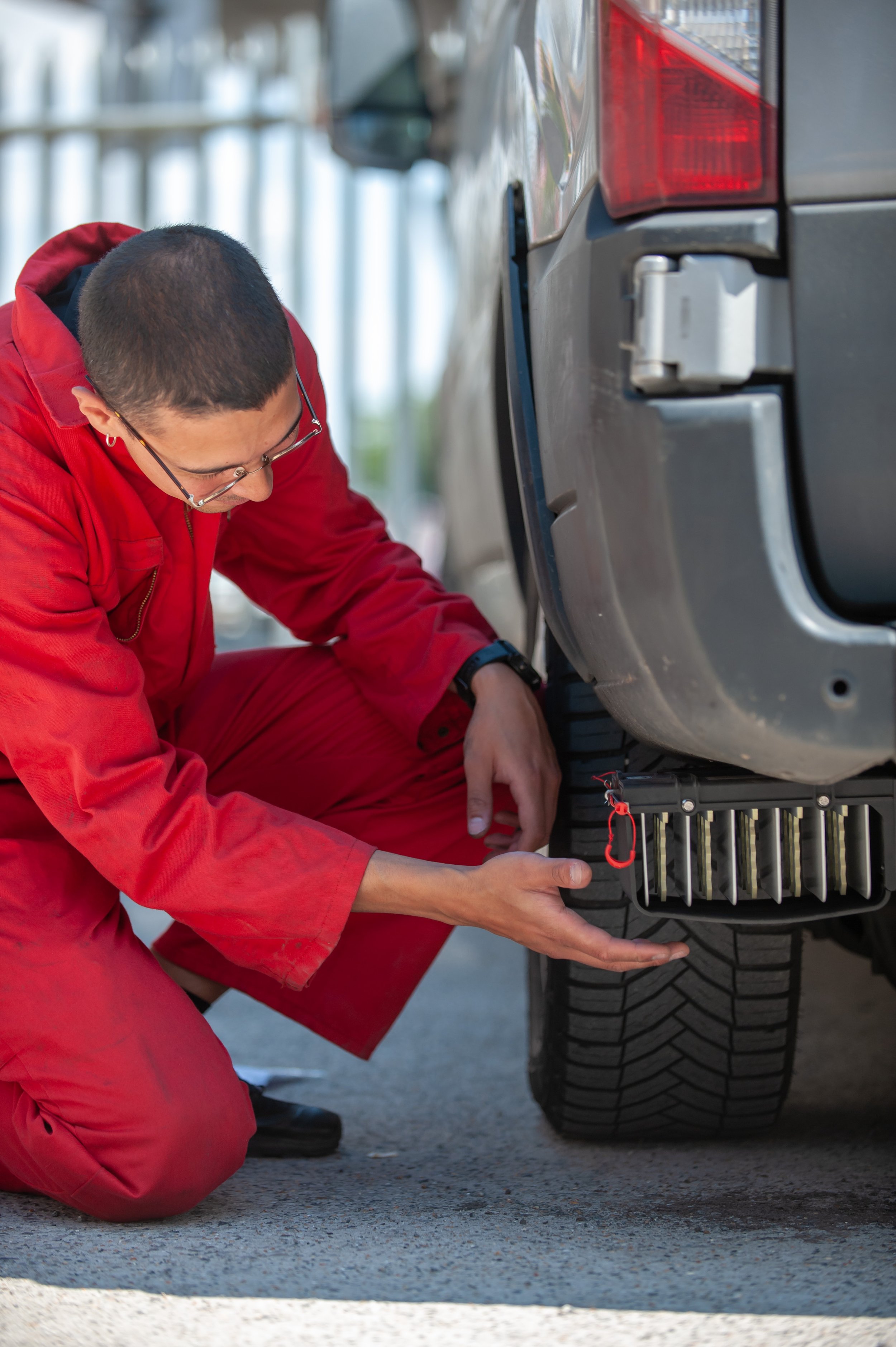We reduce the impacts of tyre pollution
We mitigate tyre wear in commercial fleets and aim to integrate our technology into new vehicles. Learn more about tyre wear and how to work with us.
This is how we help
Develop the first device to capture tyre pollution
Advance research & knowledge on tyre wear
Close the loop & turn pollution into products

2024 Impact Report
Learn more about the impact we made last year and 6 goals we set for ourselves in the coming years.
Develop the first device to capture tyre pollution
Transport will never reach zero emissions, without capturing tyre wear. We help companies stay ahead of the curve and improve their sustainability goals. We are looking for partners to scale our technology.
-
—
We discovered that tyre particles are charged from friction with the road. Our patent-pending technology uses electrostatics and airflow to attract these particles, actively removing PM from fleets. The low-power solution has minimal impact on vehicle mileage and captures PM ranging from 0.3 to 136 microns (μm). -
—
We are targeting logistic fleets. Starting with delivery and maintenance vans and moving onto buses and HGVs. Long term, we aim to scale our devices across all vehicle segments and integrate them into new electric vehicles (EVs) globally.We help improve your SDG/ESG ratings by actively reducing PM pollution from fleets and managing this waste stream responsibly.
-
—
We completed 11 on-vehicle pilots, partnering with companies like CEVT, Volvo Cars, Zhero, BMW Financial Services, Alphabet, PostNL, Rivian and HIVED.
We are looking for partners to run larger pilots, Tier 1 suppliers and manufacturers to integrate our technology into future vehicles.
Advance research and knowledge on tyre wear
We all know tyres wear down but never considered where these particles go. Today it is an emerging field and we work with leading researchers to fill knowledge gaps and understand the impacts of tyre wear.
-
—
Tyre wear is produced as vehicles accelerate, brake and corner. It enters the air we breathe, our waterways and the food we eat. Recently, it has been found Greenland's ice caps, dating back 50 years.Tyre wear is the second-largest microplastic pollutant in our oceans. These particles (<5mm) leach toxins into the environment, which has been linked to killing 90% of coho salmon on the US West Coast.
-
—
We collaborate with various research organisations on analysing tyre wear. We are looking for partners who focus in:1. Characterisation and Chemistry of tyre wear
2. Toxicological & Environmental Effects (toxic thresholds and affected species)
3. Pollution Pathways and Intervention Points (dispersal patterns and PM baselines)
Official partners: Imperial ERG & Particle Vision
-
—
There has been a shift towards non-exhaust emission policies across Europe and North America. The UK Government’s 2019 Call for Action on tyre emissions has pushed research globally to understand this pollutant. The Department of Toxic Substance control (DTSC) proposes that tyres with 6PPD need to be regulated. Tyre wear has been added to California’s Statewide Microplastics Strategy which identifies early actions and research priorities that will reduce the pollution.
Close the loop and turn pollution into products
Once we capture this pollution, what then? Sending it to landfill is not an option. Tyre wear is a form of micronised rubber that can be upcycled into a variety of applications creating a closed loop system.
-
—
Upcycling micronised rubber is an established industry, saving raw materials and energy. When used in retreads for truck tyres, it can save up to 60kg of raw materials and 50kg of carbon dioxide. -
—
The particles we capture are smaller than industrially produced ones. They have a higher surface area, which can be better for processing. -
—
Industrial and consumer applications include bitumen, 3D-printing, shoe soles, and high-performance activewear. See our recent From Pollution to Products exhibition, which explores creative applications for tyre wear, supported by the Terra Carta Design Lab.
Raise awareness on
tyre wear
In addition to product development and research, one of our pillars is to raise awareness on tyre wear, air quality and microplastics through talks, media and exhibitions.
Sustainable Development Goals
Within these key areas we support SDGs 3, 4, 9, 11, 12, 14.
These reflect on our commitments to improve air and water quality, enabling equal access for everyone. We continuously innovate new solutions, focusing on the whole life cycle of the product and beyond.










